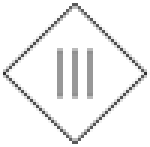Equipment classification
In the electrical appliance manufacturing industry, the following IEC protection classes are used to differentiate between the protective-earth connection requirements of devices
Class 0
These appliances have no protective-earth connection and feature only a single level of insulation and were intended for use in dry areas. A single fault could cause an electric shock or other dangerous occurrence. Theses appliances are forbidden.
Class 1
 | These appliances must have their chassis connected to electrical earth (ground) by a separate earth conductor (coloured green - green/yellow in most countries). The earth connection is achieved with a 3-conductor mains cable, typically ending with 3-prong AC connector which plugs into a corresponding AC outlet. The basic requirement is that no single failure can result in dangerous voltage becoming exposed so that it might cause an electric shock and that if a fault occurs the supply will be removed automatically. |
A fault in the appliance which causes a live conductor to contact the casing will cause a current to flow in the earth conductor. If large enough, this current will trip an over-current device (fuse or circuit breaker (CB)) and disconnect the supply.
Class 2
 | A Class II or double insulated electrical appliance is one which has been designed in such a way that it does not require a safety connection to electrical earth (ground). The basic requirement is that no single failure can result in dangerous voltage becoming exposed so that it might cause an electric shock and that this is achieved without relying on an earthed metal casing. This is usually achieved at least in part by having two layers of insulating material surrounding live parts or by using reinforced insulation. |
Class 3
 | A Class III appliance is designed to be supplied from a separated/safety extra-low voltage (SELV) power source. The voltage from a SELV supply is low enough that under normal conditions a person can safely come into contact with it without risk of electrical shock. For medical devices, compliance with Class III is not considered sufficient protection, and further more-stringent regulations apply to such equipment. |





